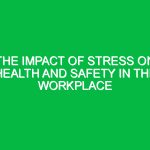Workplace safety is a crucial aspect of any organization, as it not only ensures the well-being of employees but also contributes to overall productivity. In this article, we will explore some of the most common workplace hazards and provide practical tips on how to mitigate them effectively.
Slips, Trips, and Falls
One of the most prevalent workplace hazards is slips, trips, and falls. These accidents can occur due to wet floors, cluttered walkways, or uneven surfaces. To mitigate this risk, it is essential to keep work areas clean and organized. Implement non-slip flooring, use warning signs for wet floors, and provide proper lighting to enhance visibility.
Electrical Hazards
Electrical hazards pose a significant risk in many workplaces. To reduce the likelihood of electrical accidents, ensure that all electrical equipment is properly maintained and inspected regularly. Train employees on safe practices when working with electricity and provide personal protective equipment such as insulated gloves.
Fire Hazards
Fire hazards can be catastrophic if not addressed promptly. To mitigate the risk of fires in the workplace, establish clear evacuation procedures, conduct regular fire drills, and ensure that fire extinguishers are easily accessible and in good working condition. Additionally, store flammable materials in designated areas away from ignition sources.
Chemical Exposure
Chemical exposure can lead to serious health issues if proper precautions are not taken. To mitigate the risk of chemical exposure, provide employees with adequate training on handling hazardous substances, use appropriate personal protective equipment, and ensure that chemicals are stored in well-ventilated areas with clear labeling.
By addressing these common workplace hazards and implementing proactive measures to mitigate them, organizations can create a safer and healthier work environment for their employees. Remember, safety should always be a top priority in any workplace.


